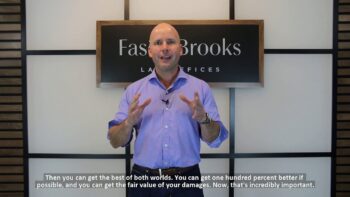We pay good money to insurance companies and we expect them to protect us when we need them. But insurance companies are in business to make money, so who keeps them honest? Plaintiff’s attorneys, that’s who, and we do that by fully understanding and applying bad faith laws.
Your insurance company has a duty to act in “good faith.” That means if they reject an opportunity to settle a claim within the insured’s policy limits and instead try the case and lose, they are on the hook for the difference between the policy limits and what the jury awarded. If a jury verdict exceeds the insured’s policy limits, the insurance company cannot then say to their insured, “Sorry, buddy. You only bought x amount of coverage, so you have to pay the difference.” No, when insurance companies gamble, they do it with their money, not yours.
In a situation like that, when they could have gotten their insured out of a lawsuit within the limits of the insurance they’d paid for all those years, then effectively there are no coverage limits. By rolling the dice and not settling the claim when they could, the insurance company then owns that verdict and has to pay the entire amount as if its insured had purchased unlimited insurance coverage.
This has happened in our practice. Once, a homeowner’s insurer failed to tender the $100,000 policy limits, and instead chose to take a chance at trial with six strangers on a jury. My law partner, Jimmy Fasig, tried the case and the jury returned a verdict of $5 million dollars.
Another case involved a chiropractor who had only $250,000 in malpractice insurance coverage. His malpractice insurance adjuster felt they could do better at trial and get either a zero verdict – a total win for the defense – or at least get a verdict for far less than $250,000. Instead, the jury returned a verdict for $380,000, $130,000 more than the insurance coverage the doctor had purchased.
In another case, an insurance adjuster had a long history of bad blood with a plaintiff’s attorney and insisted on taking a medical malpractice wrongful death case to trial. The insured doctor had $1,000,000 in malpractice insurance coverage. The insurance adjuster refused to offer it to settle the case and avoid trial. The jury heard the case and rendered a verdict of approximately three times the doctor’s insurance coverage. In both instances, the insureds then had a bad faith claim to pursue against their insurance carriers.
Because those insurance companies did not protect their insureds – the defendants – when they could have early on in the case, they ended up paying multi-millions to ultimately resolve those cases. In addition, the insurance company was responsible for litigation costs and attorneys’ fees associated with litigating the underlying and bad faith cases for many years.
In all those cases, the insurance companies had the opportunity to take care of their insureds and resolve the claims within the purchased policy limits. Instead, they gambled- and lost. When that happens, the law says the insurance company, not the insured, pays the freight on that bad decision.
At Fasig Brooks, we take both accident and bad faith cases. If you’re confused about your exposure, give us a call at (850) 224-3310 or contact us.
You don’t have to figure these things out on your own. At Fasig Brooks, we’re on your side.





